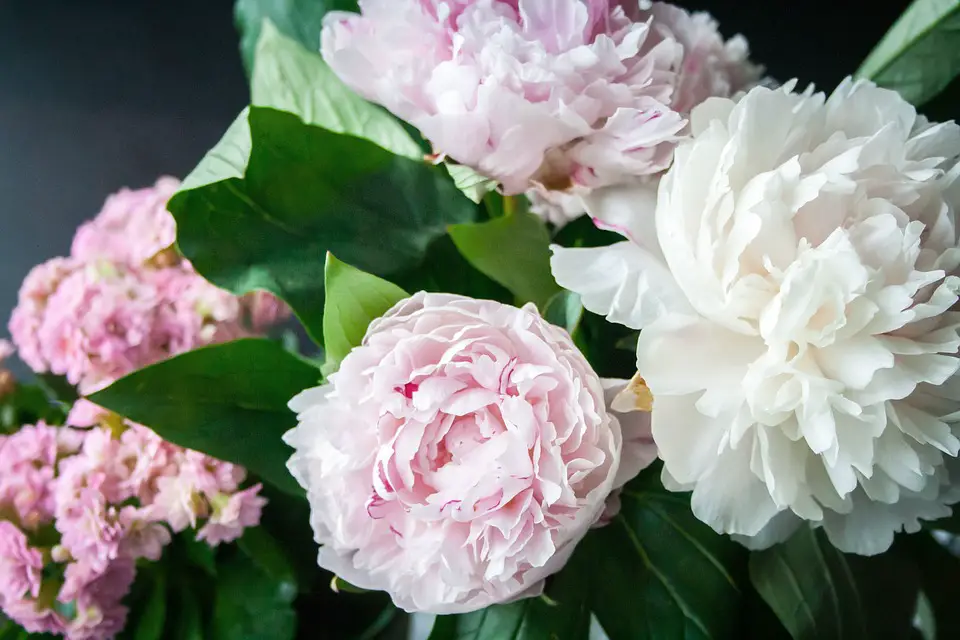What can be more exciting than coming up with a garden that will reward you with flora dividends for years? Most gardeners plant peonies for pure pleasure. But they can also play a useful role commercially because they are costly flowers used in flora design work.
There are different ways to grow peonies. You can use the seeds, root cuttings, layering, and division. However, we are going to focus on how to grow them using cuttings.
How to grow peonies from cuttings
You can use cuttings to propagate peonies’ soft-stemmed perennials. One thing to remember; you should cut far down the stem. The peony stems establish in “eyes” emerging from rhizomes below the soil surface.
Growing from seeds and cuttings of rhizomes are the well-founded ways you can use to propagate the perennials. Unlike seed-grown plants, rhizome cuttings usually blossom within one or two seasons of planting and produce a plant similar to its parent. For spring blooms, make cuttings during the fall.
So, you cut rhizomes into several parts using a sharp knife. Every piece must consist of 3 to 4 eyes and a set of roots. Using antifungal powder, you can find in garden centers, dust the rhizome sections. If you are dividing a very large or old, maintain the root’s moisture with a spray bottle while cutting the rhizome.
Discard the sections having discolorations and trim broken or older roots when dividing. Remove spongy roots because they may have nematodes or “root rot.”
1. Planting Location
Peonies are easy to grow when you plant them in the right place that has suitable soil conditions. Almost all cultivars do well in zones 3 to 8. Also, they prefer sunny spots with excellent drainage.
Growers in warmer regions may want to choose a location with partial shade to shelter the plants from the midday heat. Nonetheless, in cooler regions, peonies will be okay being in sunny spots at any time of the day.
Peony roots can rot if you plant them in soil that doesn’t drain well. Therefore, choose your planting area with care. Better still, you can raise your beds to control drainage issues. Also, for good drainage, heavily amen the clay soil you intend to use.
2. Soil Preparation
Your soil quality is of utmost importance. So, take your time to ensure that pH is close to neutral (6.0 – 7.0) and that organic matter and nutrients are distributed all over the soil column.
For the best-detailed results, go for a professional soil test. That way, you can quickly know what to improve on before the actual planting. Your area’s Cooperative Extension service can review the tests and advise you on what supplements you need to add for different nutrient deficiencies and how to modify the soil pH.
Various excellent soil labs can analyze samples. If you choose a lab, always plan to be taking your future samples also. That way, you can be sure the analyses can be related from time to time.
3. When to Plant
The rule of thumb for gardeners is to order peonies in spring and deliver them in fall during planting. But there’s a specific capacity in planting time, and that depends on the growing zones.
Suppose you are a grower in warmer areas. In that case, you may want to maintain fall planting because it enables the excellent establishment of your peony to overwinter before summer heat kicks in. However, growers in cooler regions have been successful in peony planting in both fall and spring. If you aren’t sure, experiment with both fall and spring plantings. Over time, your plants’ vigor will confirm the best for the climate in your specific area.
4. Planting Depth and Spacing
When planting peonies, please do not put them too deeply because you can get lots of foliage with no flowers. Also, do not plant your peonies too shallow because they may be overwhelmed by winter. Ideally, the target is to plant the root cuttings, so the ‘eyes’ are 1-2 inches under the soil. That is to ensure they are protected but not deeply buried.
When you transfer potted peony to the ground, it is easy to put the peony at soil level since they were already in the pot’s appropriate depth. Even so, with the bare root peonies, it is quite challenging.
Each root looks different, and the buds may not be organized on the root as you expect. In such a case, do your best to have the eyes at the right level. It is also essential to backfill soil below the peony roots as required. Avoid having any air pockets left below the roots, making the plant sink more in-depth in the soil or cause rot due to pooling water.
5. Irrigation
Peonies are highly susceptible to specific diseases, particularly botrytis spp. which thrive in low airflow, high humidity environments. Due to this, the best prevention measure you should take to fight foliar diseases; drip irrigates the peony plants.
Many growers don’t know the concept of installing irrigation; still, you can find many easy-to-use and affordable systems on the market. They can be set up quickly and last for years. The time you invest in setting up drip irrigation pays dividends in the long run through potential disease reduction and saving time.
If you water on a slope, you will want to utilize an irrigation line with pressure emitters, to make sure your plants get water evenly. In case you are watering on flat ground, you can use simple drip tape. They are affordable, although thin, and if holes are modified each spring, they can last several seasons.
Wrapping up
Well, if you were thinking of starting a peonies garden from cuttings, either for commercial purposes or just for enjoyment, then you are well equipped with the necessary information.
You now know how to make the cuttings and obtain the best sections, suitable location, and the time of the year to plant, modifying the soil for proper drainage and the planting depth and spacing. All these are crucial factors you must keep in mind. Not forgetting the installation of a sound irrigation system.
Sources:
https://education.teamflower.org/learn/growing/ssl/how-to-plant-a-peony-cutting-garden
https://www.gardenguides.com/78179-start-peonies-cuttings.html





